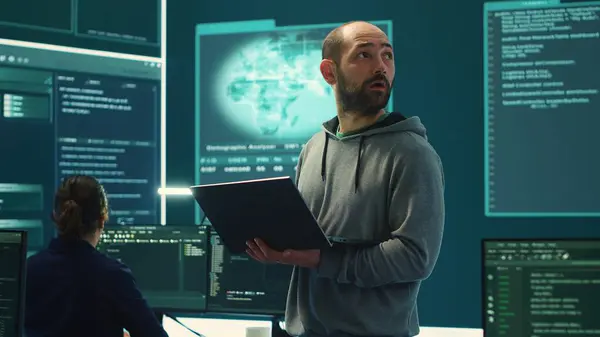
What if the digital intrusion designers themselves become victims? In earlier months this year, longtime iOS exploit developer Jay Gibson was notified by Apple of a targeted mercenary spyware attack on his own iPhone. Gibson had spent several years creating surveillance capabilities for Western government customers as an employee of Trenchant, and now he found himself the target of the very kind of offensive capability he had previously assisted in designing. This case is not just about personal this represents a concerning evolution of the spyware scene.
Mercenary spyware sellers for decades asserted their products were kept for use by approved governments against criminals and terrorists. However, investigative journalism by Citizen Lab, Amnesty International, and others has documented repeated abuses against reporters, critics, and human rights activists. Now, it seems the net is being cast in even broader terms against the exploit developers themselves. The Gibson incident, supported by several sources, presents a rare glimpse of how corporate espionage, worldwide spyware attacks, and the black zero-day market intersect.

1. Apple’s Highest-Confidence Alerts
Apple’s threat alerts are reserved for instances in which the company possesses high-confidence indication of mercenary spyware attacks. These alerts, which it has sent to users in more than 150 nations since 2021, do not indicate a successful compromise but rather credible, sophisticated attempts. In Gibson’s instance, the March 5 alert set off a chain reaction he shut down his phone, bought a new one, and took expert counsel. Several exploit developers have been shown to receive similar warnings in the past few months, suggesting there might be an orchestrated campaign within the cybersecurity community itself.

2. When Builders Become Targets
Gibson’s targeting is the first reported instance of an exploit developer being spied on with spyware. Attribution is out of reach without complete forensic examination, but possible reasons span corporate tracking of former employees to foreign intelligence gathering. The precedent is disturbing: previously in 2021 and 2023, North Korean actors went after vulnerability researchers, highlighting that cutting-edge technical skill renders such individuals high-priority intelligence targets. This trend could chill collaboration and delay the rate of security research.

3. The Growing Mercenary Spyware Market
The market for commercial spyware has turned into a financially rewarding business in which iOS exploit chains sell for seven-figure sums. Google’s Project Zero documented 97 zero-day vulnerabilities exploited in the wild during 2024 alone almost two per week with numerous attributed to commercial surveillance companies. Unpatched vulnerabilities are the sine qua non of such operations, and offensive innovation speeds often leave defensive response in the dust. Attacks can be rolled out invisibly and at a distance, with little or no user input, making them available to any well-heeled player.

4. Gibson’s Corporate Fallout
Only weeks prior to the Apple alert, Gibson was called to Trenchant’s London headquarters in the name of a team-building exercise. There he was accused of dual employment, suspended, and had his work equipment seized. Two weeks later, he was dismissed and made a settlement offer without forensic disclosure. Former colleagues indicate Trenchant suspected him of Chrome zero-day leakage, even though he had been focused on iOS vulnerabilities exclusively. Gibson insists he was a scapegoat, supported by three former employees close to the internal investigation.

5. Forensic Challenges in Spyware Detection
The forensic expert Gibson consulted found no infection traces but recommended deeper analysis. Modern spyware campaigns are increasingly adept at erasing evidence, complicating attribution and detection. As one investigator noted, “Recent cases are getting tougher forensically, and some we find nothing on.” This aligns with broader trends where even high-confidence alerts yield minimal forensic artifacts, reflecting attackers’ growing operational security.

6. Zero-Day Supply Chain Vulnerabilities
The global zero-day market is shrouded, dispersed, and filled with middlemen. Primitives of exploitation are usually chained together, sold by brokers, and can be made available to several purchasers, which in turn raises collision threats. Development will take anywhere from 6–18 months, and that generates feast-or-famine dynamics for sellers. Counterintelligence danger is endemic, with attacker states snooping on researchers to steal their tools. The U.S. acquisition pipeline relies heavily on prime contractors and subcontractors, often manned by ex-government personnel, but is plagued by recruitment and training deficits.

7. Apple’s Defensive Innovations
Apple has added such capabilities as Optional Lockdown Mode and Memory Integrity Enforcement in recent iPhones, integrating hardware and software protections to combat memory safety exploits. These efforts are designed to increase the expense and difficulty of attacks, yet the asymmetry continues defenders must harden all vectors, whereas attackers need just one. The Gibson case demonstrates that despite layered defenses, well-resourced attackers can still launch plausible targeting attempts.

8. Strategic Implications for Cybersecurity Experts
Engaging exploit authors is a strategic escalation. Privileged access and expertise are now selectors for monitoring, in addition to the classic political or journalistic profiles. The trend may transform the offensive cyber talent pipeline because risk-averse researchers shift away from vulnerability development. For those who stay, operational security now needs to include personal threat models against nation-state and mercenary spyware adversaries. Gibson’s case highlights that in this space, nobody is out of reach.

The Gibson case is a stark reminder that the market for mercenary spyware has evolved to the point where its authors are no longer insulated from its reach. While offensive capabilities spread and detection becomes increasingly difficult, the distinctions between attacker and defender fade. For cybersecurity experts, exploit creators, and investigative journalists, the message is clear: the same access and skills that are their greatest value to clients are also their biggest target. In the ongoing game of cat and mouse in cyberspace, self-defense is no longer a choice it is mission essential.

